#intertidal arthropods
Explore tagged Tumblr posts
Text

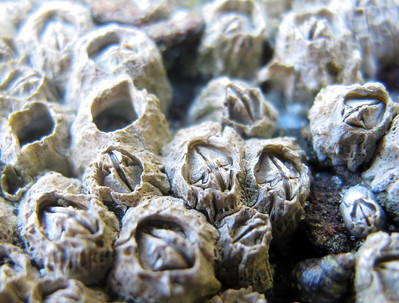

Common Acorn Barnacles on Call
Semibalanus balanoides, more commonly known as the common acorn barnacle or the northern acorn barnacle, is a widespread species of barnacle found all along the Pacific and Atlantic coasts of North America and the intertidal zone of Europe-- though it is notably absent from the Bay of Biscay. Its range is limited by the temperature of the water in which it breeds; in the winter, they require water as cold as 7.2 °C (45.0 °F), but throughout the rest of the year they can tolerate much warmer climates.
Like many barnacle species, S. balanoides is hermaphroditic, meaning it has both male and female reproductive organs. Once the water reaches the optimal temperature, typically in November or December, the barnacles begin to breed. An individual will reach out with a penis that can be up to 7.5 centimetres (3.0 in), and inseminate a nearby barnacle; this process may be repeated up to eight times between a single pair. After insemination, the penis disintegrates to be regrown the following year.
In the meantime, the fertilized barnacle will produce up to 10,000 eggs that are stored in a special sac within the shell cavity. The common acorn barnacle releases its eggs between February and April, in concert with warming waters and the spring algal bloom. The eggs then hatch into miniscule larvae, which spend several weeks feeding on plankton in the water column and going through a series of molts. Following the sixth molt, the larvae stops feeding and seeks out a suitable place on which to anchor itself. Once it has found a surface, the larval barnacle 'crawls' along the surface until it encounters one of its own species. At this point, they will attach themselves with a cement-like glue which is capable of supporting up to 3,200 kg (7,000 lbs) Here, a single northern acorn barnacle may live anywhere from one to seven years.
Adult S. balanoides are identified by the white, six-sided limestone casing with which they protect themselves. However, one unique feature of this species is the way in which they attach themselves to their chosen surfaces; unlike other barnacles, which have a hard calcified shell base, the northern acorn barnacle has a membranous base. Within their shells, they have rather soft bodies, including a set of feathered appendages called cirri with which they use to breathe and collect food.
The common acorn barnacle is a filter feeder, consuming microscopic plankton and bits of detritus from the water column. Though their hard shells deter most predators, adults are vulnerable to other predatory invertebrates like dogwelks, nudibranches, and sea stars, as well as fish like the shanny that are specialist feeders of barnacles.
Conservation status: The common acorn barnacle has not been assessed by the IUCN. The species is extremely common and very resilient, and in fact has been in existence since the Jurassic period. However, rising ocean temperatures may negatively affect their breeding period.
If you like what I do, consider leaving a tip or buying me a kofi!
Photos
Neil DeMaster
Oregon State Parks and Recreation
Kim Hanson via Wikimedia commons
#common acorn barnacle#Balanomorpha#Balanidae#acorn barnacles#barnacles#crustaceans#arthropods#marine arthropods#intertidal arthropods#coastal arthropods#atlantic ocean#pacific ocean#animal facts#biology#zoology
124 notes
·
View notes
Text


okay for you sea life and crab lovers i have a pic of this very tiny and pretty crab... SIKE ITS NOT A CRAB!!! notice how it only has six legs??? its a faker. a knockoff. an imitator if you will...
this spotted porcelain crab (Porcellanella triloba) are not easy to find... because they hide inside sea pens. if you dont know what a sea pen is... look at the second picture. just another one of the weird and wonderful things nature has created
they got a symbiotic relationship... the sea pen hides the crab and protects it with its spines and the crab eats the filth that flows past...
yeah porcelain crabs are cool hell yeah
#photography#nature#macro#arthropods#animals#crabs#decapods#porcelain crabs#crustacean#intertidal#sea pen#marine biology#aquatic life#sea creatures
20 notes
·
View notes
Text



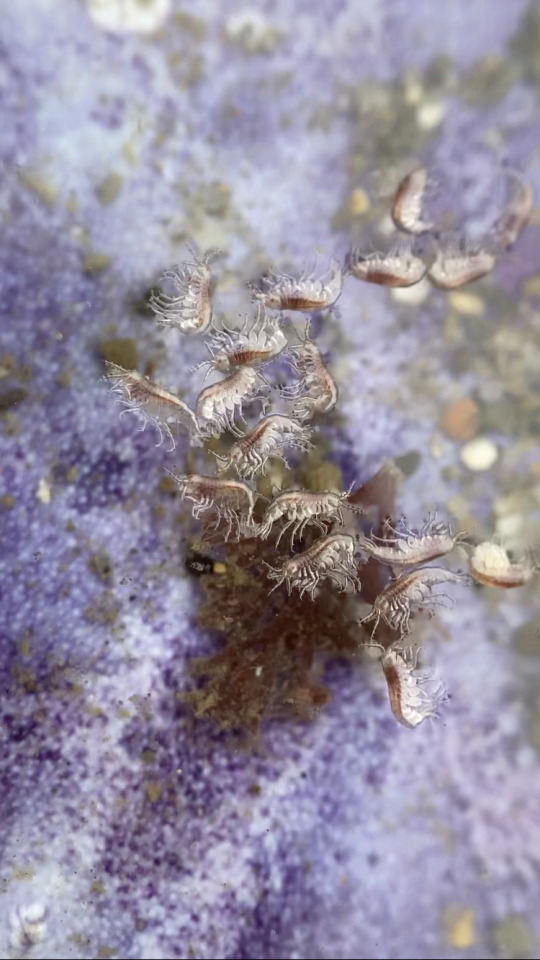
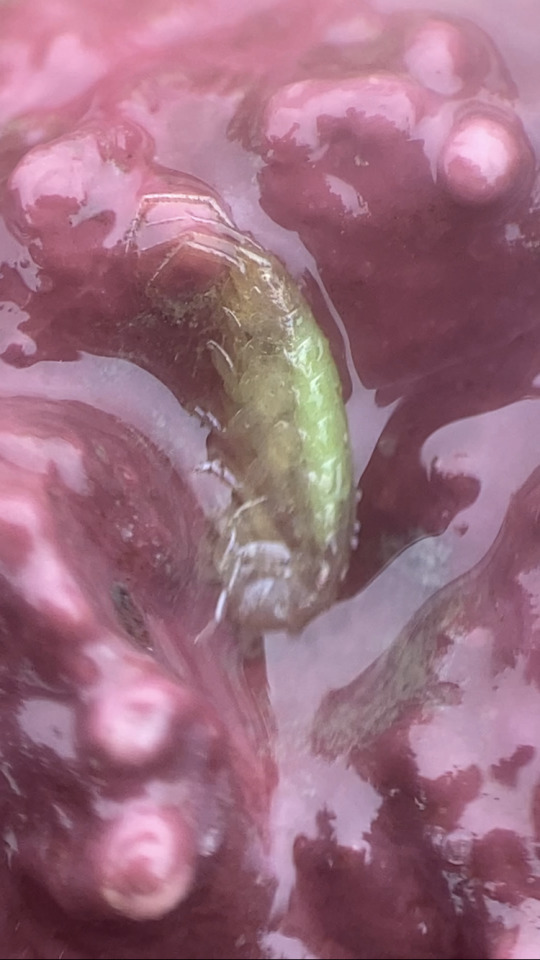

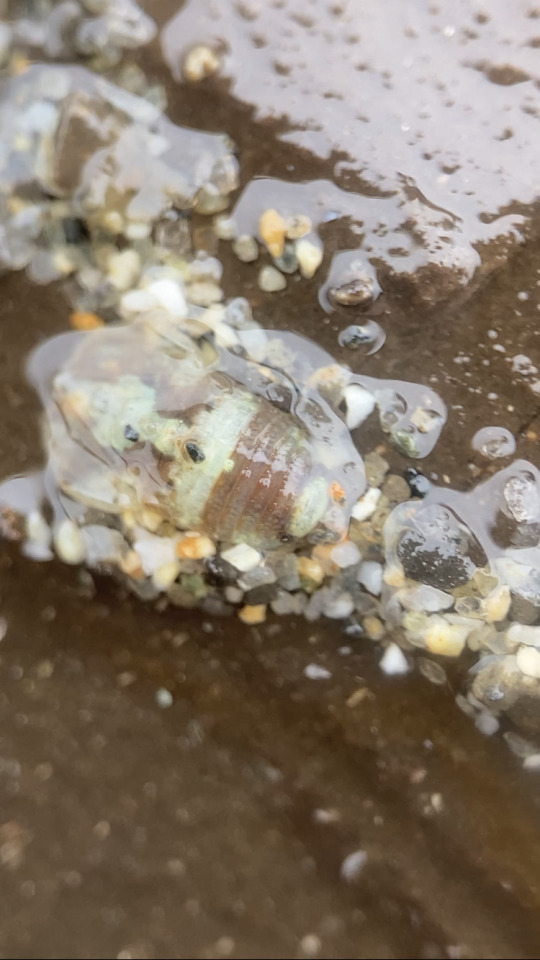




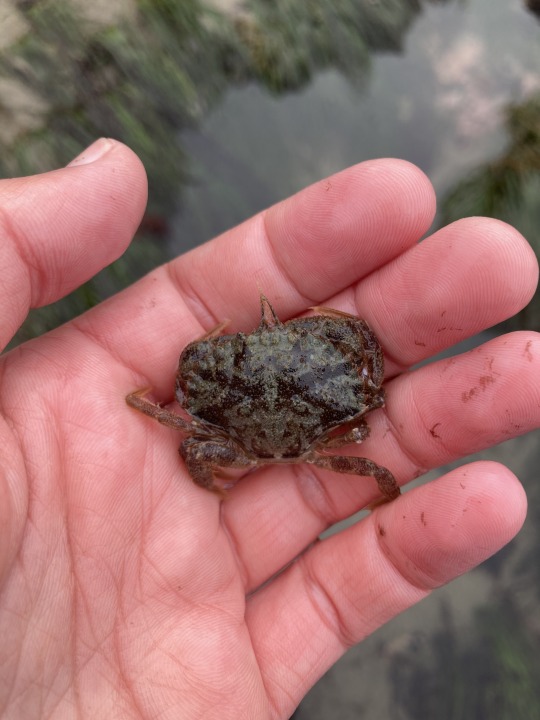
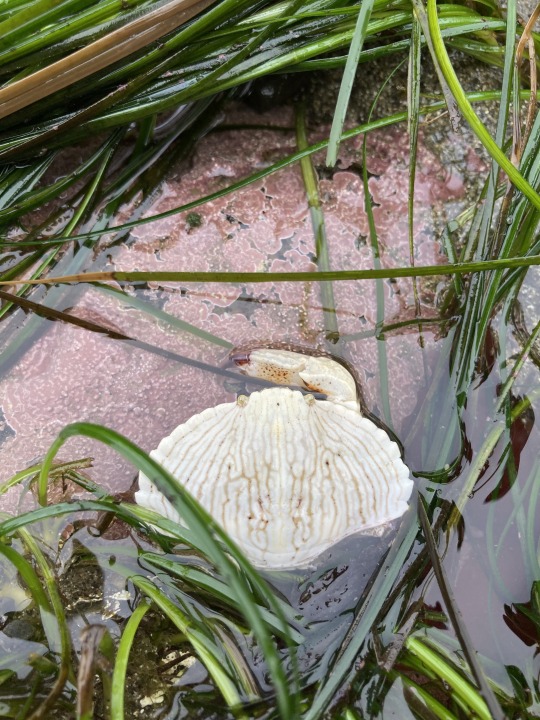



Got out on the rocks this weekend to celebrate Tiny Crustacean Fest.
Top: the tide was really fuckin low
2nd row: A very distressed mother and the brood of babies she released from her marsupium when I put her in the water to look at. :( Absolutely refuse to make an ID on her.
3rd row, left to right: Ischyroceridae (Ischyrocerus?), Aoridae (Aoroides?), Sphaeromatidae
4th row, left to right: Melitidae, Ericthonius sp.
5th row, left to right: Petrolisthes cinctipes, Romaleon branneri, Cancer productus
6th row, left to right: Hemigrapsus nudus (I've never seen one so big in CA!), Lophopanopeus bellus, some weird orange thing without an exoskeleton idk (jk i'm pretty sure it's Triopha maculata)
#Jasen and I went to the rocky intertidal and forgot everything we wanted to bring except a handlens#All the pics with a purple background were taken of critters floating in a rock crab carapace we found because we didn't bring a container#animal#arthropod#crustacean#amphipod#isopod#brachyura#anomura#mollusca#gastropod#nudibranch
11 notes
·
View notes
Text
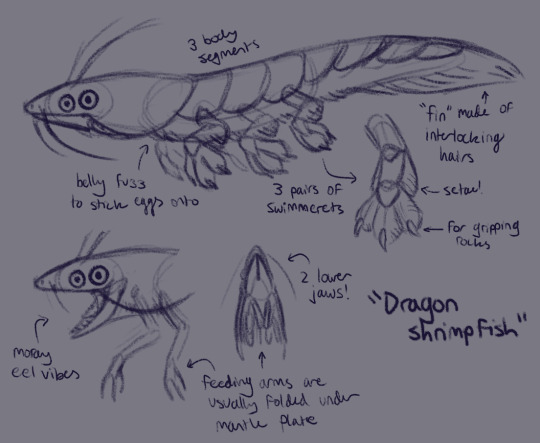
Wretched beast for a worldbuilding project called Skylight!!! I'm calling it a dragon shrimpfish for now.
Info and notes transcript under the cut!
For context, this is an extinct alien native to a moon that has extreme tides due to orbiting a planet. The world also has magic because it's fun :]
Dragon shrimpfish have a mix of arthropod and vertebrate traits. I'm thinking that they lived in shallow seas and foraged in reefs. Occasionally they would enter intertidal zones to forage but were forced to retreat when the tides went out.
Notes transcript:
Main drawing
3 body segments
belly fuzz to stick eggs onto
3 pairs of swimmerets
tail "fin" made of interlocking hairs
Swimmeret detail
covered in setae!
claws for gripping rocks
Lower drawings
moray eel vibes
2 lower jaws!
feeding arms are usually folded under mantle plate
#raintailed's art#skylight#worldbuilding#speculative biology#i dont really know how to do spec bio so im just goofing around#funny creatures...#this is actually very loosely based on worm on a string LOL#queue
106 notes
·
View notes
Text
The dietary compositions of true or combtooth blennies, are in fact variable. Omitting from consideration the non-grazing species, such as Meiacanthus and Aspidontus, we are left with a number of benthic fishes, many of which are tropical reef associated, and turn up in aquarium imports. At the point of retail they may be identified to a species, or sold as 'assorted blenny'. For decades aquarists have bought blennies assuming them all algivorous, then found them sometimes to nip at corals or clam mantles. Furthermore most herbivorous blennies consume mostly detritus, rather than living algal growth.
Curiously they do not correlate precisely to evolutionary changes in their dentition, relating more closely to methods of feeding than to food sources. Thusly, the dentition of the corallivorous Exallias, which rasps living coral from its stony skeleton, resembles that of algivorous blennies that similarly graze upon hard substrates. This is perhaps a cautionary tale to bear in mind, that many blennies are equipped to be corallivorous.
Most complaints against blennies unexpectedly nipping coral colonies, are charged at the genus Ecsenius. Excluding the strangely planktivorous members of this genus, such as the Midas blenny (E. midas), these are in all grazers that prefer vegetable materials. However their diets in the wild are verified to include mucus of animal origins, similar to that consumed by Exallias. The only logical conclusion is that, despite their overall herbivorous niche, the grazing Ecsenius sp. do also eat coral tissues as natural behavior.
Another rather popular blenny genus that are considered herbivorous in the literature, the molly millers (Scartella sp.), are known to consume sessile animals such as barnacles, bivalves, sponges, tunicates, and bryozoans. I am not yet aware of Scartella sp. consuming any cnidarians, even incidentally, although their diets are broad and proven to include some animals.
Whereas members of the genera Cirripectes, Salarias, and Atrosalarias, are proved to be consumers of algae and detritus, to the exclusion of the deliberate consumption of sessile fauna. Another genus that might be worth considering as very low risk, is the intertidal Blenniella genus. These seem quite strictly non-carnivorous, yet are still reported to consume small arthropods and gastropods. Although not, or at least not yet, any anthozoan tissues or mucus.
#blennies#fishes with corals#corallivory#reef tank problems#combtooth blennies#Ecsenius#Scartella#Blenniella#Cirripectes#Atrosalarias#Salarias#algivores#algae grazers#detrivores#misunderstood fish
0 notes
Photo
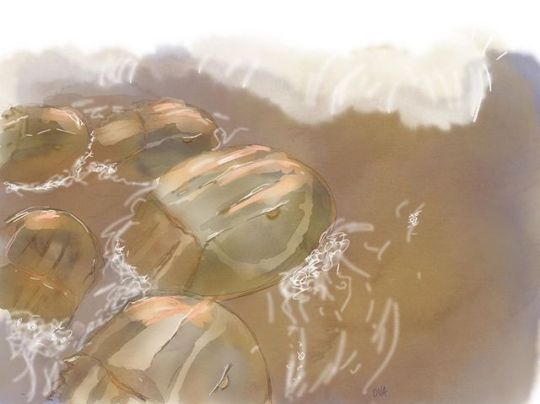
The time is almost upon us... #horseshoecrabs . . . #horseshoecrab #arthropod #beach #seashore #ocean #sand #water #art #science #SciComm #animals #wildlife #nature #waves #intertidal #drawing #drawings #sketch #sketches #watercolor #digitalart #Lewes #Delaware #nightlife #hightide https://www.instagram.com/p/BxyHrclA2zC/?igshid=1jmqduhzyfokf
#horseshoecrabs#horseshoecrab#arthropod#beach#seashore#ocean#sand#water#art#science#scicomm#animals#wildlife#nature#waves#intertidal#drawing#drawings#sketch#sketches#watercolor#digitalart#lewes#delaware#nightlife#hightide
1 note
·
View note
Photo


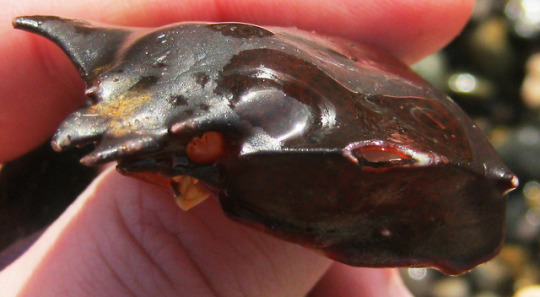
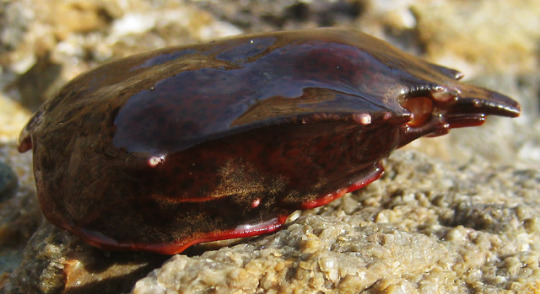
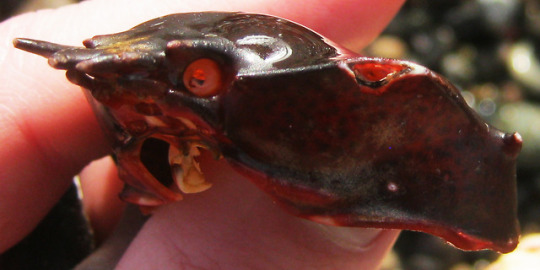
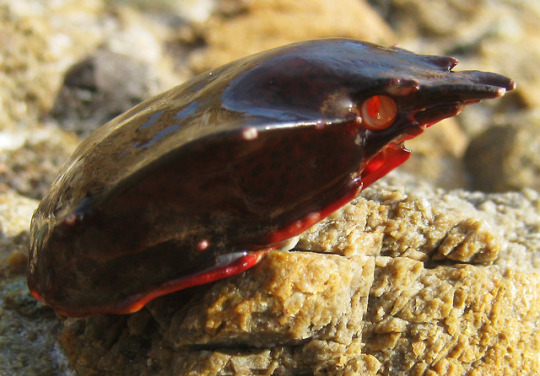
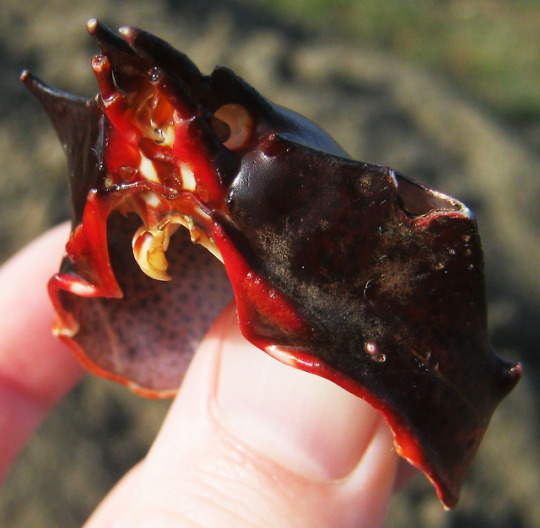
Kelp crab carapace at Point Lobos, 30 December 2018.
#crab#kelp crab#crustacean#california#big sur#coast#coastal#intertidal#sea#marine#arthropod#invertebrate#nature#wildlife#fauna#beach
3 notes
·
View notes
Text
Y'all voted for a crustacean for Wet Beast Wednesday so I picked possibly the weirdest one to go over. We're talking about barnacles. Barnacles were initially classified as mollusks for understandable reasons as they look a lot like limpets. It wasn't until observation of the larvae that they were reclassified as very strange crustaceans. The hard outer shell contains a little crabby critter that will spend its entire life within. Barnacles can be loosely divided into acorn barnacles, who have their shells directly attached to a solid surface, and goose barnacles, who use a thick, muscular stalk they use to attach.
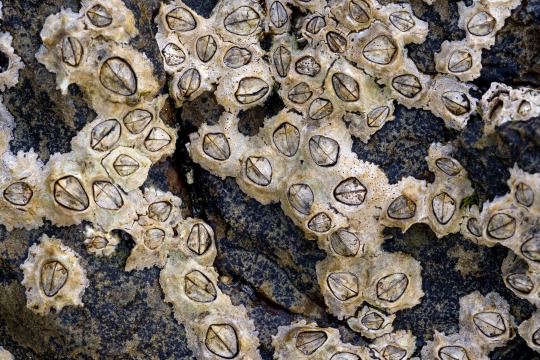
(image: acorn barnacles)
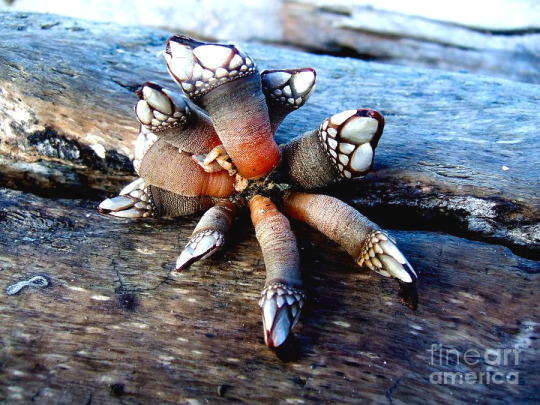
(image: goose barnacles)
Barnacle shells are derived from the same structures as the carapace of other crustaceans, leaving the barnacle within as a fleshy blob. Most species have an operculum that can open to allow feeding or close to retain water and avoid predators. The vast majority of barnacles are suspension feeders who will stick their legs out of the shell. These legs are covered in sticky filaments that snag plankton and organic material that will be pulled down to the mouth. A few goose barnacles lack cirri and require water movement to bring food into their shells. Barnacles that live in intertidal zones (roughly 25% of species) will close their shells during low tide to retain water. Because barnacles are so sedentary, they lack hearts and gills.
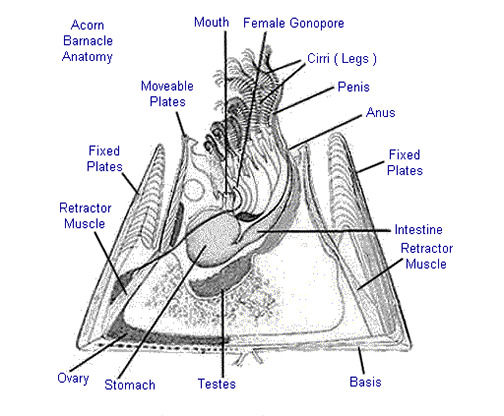
(image: a diagram of barnacle anatomy)
Most barnacles are simultaneous hermaphrodites, producing male and female gametes at the same time (as opposed to sequential hermaphrodites, who change sex during their lives), those some species are gonochoric (distinct males and females) or androdioecious (distinct males and hermaphrodites). Because they are sessile, mating is difficult for barnacles and they have developed internal and external reproduction depending on species. Those that reproduce internally have enormously long, flexible penises that are used to reach and fertilize their neighbors. The barnacle famously has the longest penis to body size ration of any animal, with the penis growing up to 8 times longer than the rest of the animal. Other species use a technique called spermcasting in which male gametes are released into the water and picked up by females/hermaphrodites for fertilization. Juvenile barnacles go through two distinct larval stages. The first of these is the nauplius, a one-eyed, free-swimming larva that will go through 6 molts before transforming into the next stage. The next stage is the cyprid and its only purpose it to find a suitable pace to spend the rest of its life. It will use its antennae to examine hard surfaces with a number of criteria including surface texture, chemistry, color, biofilm, and the presence of other barnacles. Cyprids have limited energy stores as they cannot feed and test have shown they get less picky the longer they spend in this stage. Once a cyprid finds a suitable spot it will permanently attach itself headfirst using a secreted glue and metamorphose into a juvenile barnacle.

(image: a diagram of barnacle life stages)
Some species of barnacle aren't content living on rocks and instead attach to animals. Various barnacle species have adapted to latch onto other animals, including whales, sea turtles, mollusks, crustaceans, and other arthropods. In most cases, these barnacles have a commensal relationship with their hosts; the barnacle gets the benefit of a free ride and protection from predators while the host neither benefits or suffers from the relationship. In cases of heavy infestation, the barnacles could cause irritation or drag and could cause problems for their hosts. One group of barnacles, the rhizocephalans, have gone further and adapted a fully parasitic lifestyle. These have become so heavily adapted they are virtually unrecognizable as barnacles or even arthropods, lacking shells, appendages, body segments, and most organs. A female consists of gonads, a few muscles, the remnants of a nervous system, and a cuticle. Males have even less, they are reduced to a cluster of cells that live inside the females to provide a constant supply of sperm. Parasitic barnacles mostly target decapods (crabs, lobsters, shrimp, etc) thous some species target other crustaceans, including other barnacles. When a female larva attaches to a host, it grows a root-like cell mass called the vermigon into the host's body that absorbs nutrients through the host's blood. The most famous group of parasitic barnacles are in the genus Sacculina, who parasitize crabs. When these barnacles attach to a crab, they sterilize it and prevent it from molting or regrowing lost limbs. It also grows a sac where the female crab would hold its egg sac and forces the crab to protect it as if it really were an egg sac. When Sacculina infests a male crab, it interferes with hormones, causing the male crab to take on a feminine body plan and act female. When the barnacle is ready to release its larvae, the crab will assist as though it was releasing its own egg case.
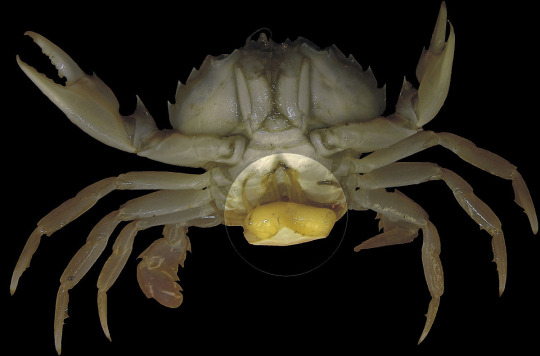
(Image: Sacculina force-femming a crab)
Goose barnacles are the subject of a famous myth involving geese that granted them their name. The barnacle goose is a species native to Europe but in the days when spontaneous generation was accepted, nobody knew how they reproduced. The geese migrate to the arctic to mate and lay eggs, but nobody knew that at the time. A common myth arose where goose barnacles attached to driftwood were said to be the remnants of goose trees, where the barnacle would grow and eventually release a fully-grown goose. This myth is where the name barnacle came from. The crustaceans were named after the goose.

(image: a drawing of a goose tree)
#wet beast wednesday#barnacles#crustacean nation#crustaceans#parasite#biology#zoology#marine biology#marine life#that one parasite that force-femmes crabs
200 notes
·
View notes
Photo
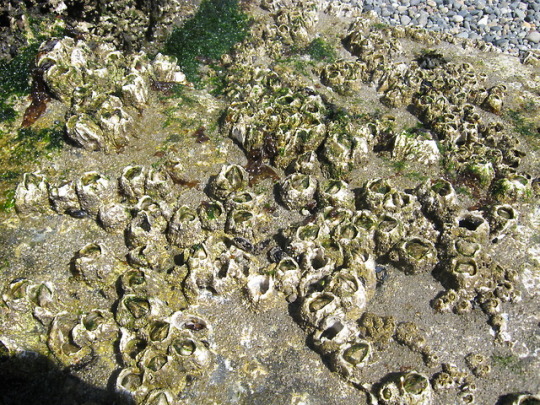


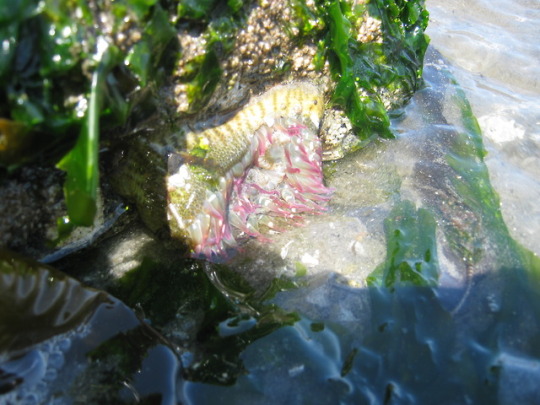
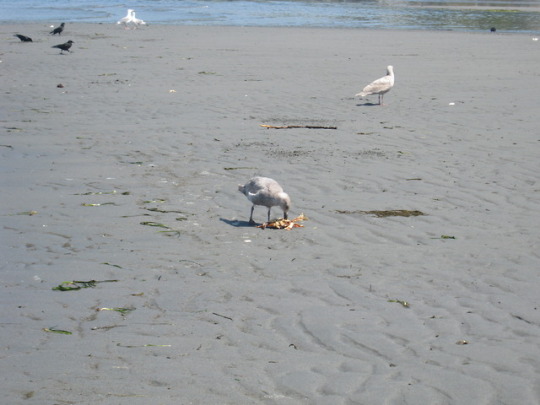
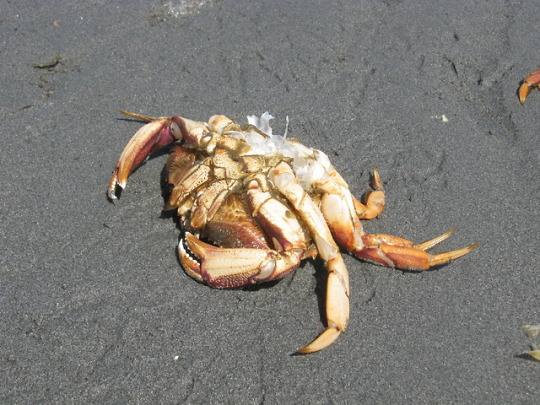

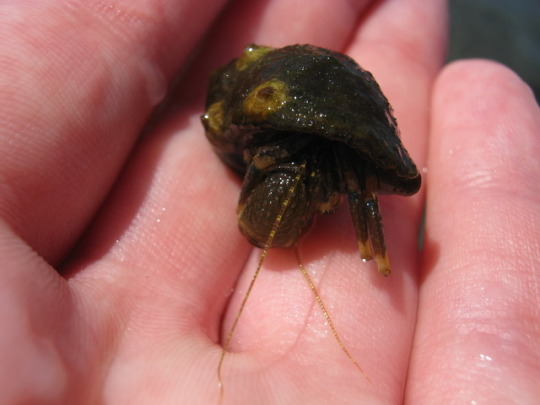


Pictures from Alki Beach on Wednesday, part 2- Some of the critters I saw
(Seen, but not pictured because they were too far away to get good shots: an osprey, a great blue heron, surf scoters)
#photography#wildlife#alki beach#seattle#washington state#intertidal life#invertebrate#arthropod#crustacean#crab#barnacle#isopod#mollusk#bivalve#cockle#gastropod#moon snail#cnidarian#anenome#birb#pigeon
4 notes
·
View notes
Note
Can I suggest springtails for your iNat requests -- specifically Poduromorpha/Neanuridae? They are wonderful, incredibly underappreciated creatures and there are some beautiful observations on iNat -- if you want to see the real stunners, check out Pseudachorutinae
Thank you for writing in! Springtails are delightful creatures that I hope to photograph more, but they like to spring out of frame! It always seems I have more luck photographing them unintentionally than I do intentionally. Maybe they want to surprise you post-upload when you find them scattered in the dirt behind a bug so many times their size!

Dragon Springtails (Genus Acanthanura) © Nick Porch [ID: A dark-bodied arthropod with six orange legs and orange bumps and horn-like structures on its head and back. The protrusions are longest on top of it's head, along it's sides, and at it's rear. /End ID] Truly stunning! This individual was observed in Southeast Australia. The name Dragon suits the horns on it's head well.

Seashore Springtail (Anurida maritima) © Evan C [ID: Several dozen bluish grey springtails cluster together as they float on the surface tension of the water.]
This raft of springtails was observed in Coastal Maine, US. This species is considered cosmopolitan but is apparently not found in parts of the British Isles and the Baltic Sea. If anyone seeing this has access to a rocky coast or intertidal zone, see if you can find an aggregation of these guys! They use pheromones to group together and float easily due to their small size and hydrophobic bristles on their body.
Thank you again for the request, I learned a bit more and grew more curious!
#nature photography#wildlife photography#ecology#zoology#nature#springtails#killy killy#ask#inaturalist#entognatha#photography
108 notes
·
View notes
Note
when Jotaro finds out what Kakyoin's favorite sea creature is, do you think he'd put special time into learning more about it so he can share facts? Love the idea of Jotaro associating some marine life with Kakyoin and always just being a little happier when/if it crops up during his work.
YASSS UR SPEAKINGMY FUCKING LANGUAGE YES i actually think both of them have very big soft spots for marine invertebrates so this is perfect that you mention this yes
jotaro obviously is inclined more toward echinoderms (i do think both of them love them tho which makes kakyoin a great person to yammer to about the insane shit about starfish cause for once kakyoin is content to listen and jotaro is content to speak) but i think kakyoin really likes arthropods particularly the isopod. he loves the giant isopod it is his best friend. i think kakyoin is actually the one to go to the aquarium more often than jotaro because it's the only way he gets to see giant isopods. he reads to them through the glass
as a result ^ i agree i think jotaro always smirks a little whenever he comes across isopods in his work esp cause many smaller isopods are intertidal guys like starfish are. he lifts rocks around and always has to smile a little when an isopod scuttles away
also i think kakyoin has a soft spot for squids/octopus cause they remind him a little of hierophant and jotaro has to agree. when an octopus his team is looking after wraps its little arm around his finger he's like omfggggg cause it reminds him of hierophant's occasional affectionate touches
anyway. great quesiton. thanky ou
6 notes
·
View notes
Text
The A in LGBTQIA+ is for Arthropod

Pls click for better quality tumblr really fucked this pic up :/
Happy ace week! Im still thrilled about the rep in taz graduation so here is a supportive ace pride snippers! I just really like fiddler crabs so I wanted to draw snippers the way I picture him, which isnt particularly magical looking unless you consider the fact that all fiddler crabs are 🌠magical🌠 so head on down to your local intertidal marsh to observe some magic lads today!
#ace#asexual#mcelroy#sir fitzroy maplecourt#the adventure zone#pride#taz#taz grad fanart#taz graduation#the adventure zone graduation#taz grad#snippers#asexual awareness week#the first line is a joke the a is not for arthropod its for ace aromantic and agender pls know that i am ace#ace rep#ace characters#my art#painting#crab#arthropoda#animals#watercolor#traditional art#taz snippers#thundermen llc#fiddler crab#boggblog
573 notes
·
View notes
Note
What is the relationship between Kabutops and Scyther? Is Kabutops an ancestor or do/did they just occupy similar niches? Also, what effects do defossilized Pokemon have on modern ecosystems when they're released?
There is some genetic relation between them, as they are both in the same clade of arthropods, but Kabutops is not a direct ancestor of Scyther. You can think of them as offshoots from the same branch on the evolutionary tree that contains the specialized forelimb blades. Interestingly, they inhabit pretty different niches. Kabutops are intertidal apex predators, whereas Scyther hunt in open grasslands, avoiding water, and are not at the very top of their food webs.
-Thea
42 notes
·
View notes
Video
youtube
What is INTERTIDAL ZONE? What does INTERTIDAL ZONE mean? INTERTIDAL ZONE meaning - INTERTIDAL ZONE definition - INTERTIDAL ZONE explanation. Source: Wikipedia.org article, adapted under http://ift.tt/yjiNZw license. The intertidal zone, also known as the foreshore and seashore and sometimes referred to as the littoral zone, is the area that is above water at low tide and under water at high tide (in other words, the area between tide marks). This area can include many different types of habitats, with many types of animals, such as starfish, sea urchins, and numerous species of coral. The well-known area also includes steep rocky cliffs, sandy beaches, or wetlands (e.g., vast mudflats). The area can be a narrow strip, as in Pacific islands that have only a narrow tidal range, or can include many meters of shoreline where shallow beach slopes interact with high tidal excursion. Organisms in the intertidal zone are adapted to an environment of harsh extremes. The intertidal zone is also home to many several species from different taxa including Porifera, Annelids, Coelenterates, Mollusks, Crustaceans, Arthropods, etc. Water is available regularly with the tides but varies from fresh with rain to highly saline and dry salt with drying between tidal inundations. The action of waves can dislodge residents from the littoral zone. With the intertidal zone's high exposure to the sun, the temperature range can be anything from very hot with full sun to near freezing in colder climates. Some microclimates in the littoral zone are ameliorated by local features and larger plants such as mangroves. Adaptation in the littoral zone allows the use of nutrients supplied in high volume on a regular basis from the sea, which is actively moved to the zone by tides. Edges of habitats, in this case land and sea, are themselves often significant ecologies, and the littoral zone is a prime example of a sea and more things A typical rocky shore can be divided into a spray zone or splash zone (also known as the supratidal zone), which is above the spring high-tide line and is covered by water only during storms, and an intertidal zone, which lies between the high and low tidal extremes. Along most shores, the intertidal zone can be clearly separated into the following subzones: high tide zone, middle tide zone, and low tide zone. The intertidal zone is one of a number of marine biomes or habitats, including estuaries, neritic, surface and deep zones.
0 notes
Photo
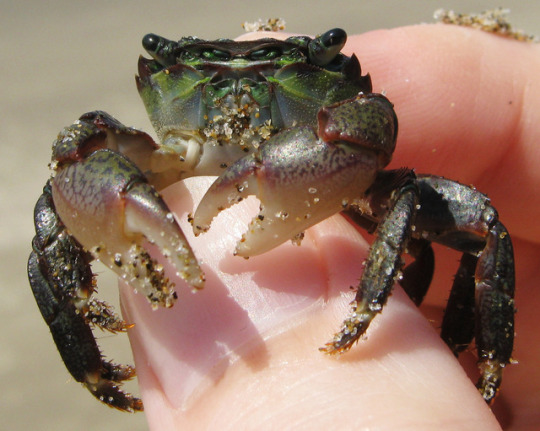
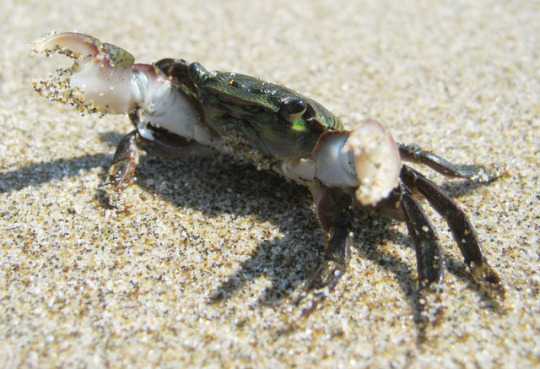
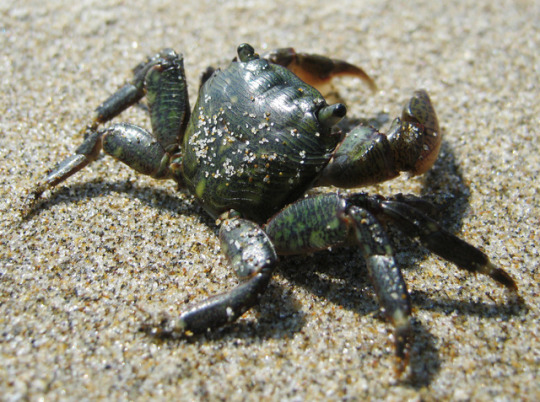
Fierce little Lined Shore Crab Pachygrapsus crassipes at the far south end of Cannon Beach, 28 August 2017.
#crab#shore crab#lined shore crab#striped shore crab#decapod#crustacean#arthropod#intertidal#tide pool#rock pool#marine#marine biology#organism#biology#zoology#nature#fauna#wildlife#pacific northwest#oregon#coast#beach#tolovana#macro#photo#photography
752 notes
·
View notes
Photo

Another adorable little Pachygrapsus crassipes at Barview Jetty in Garibaldi OR, 30 August 2017. I saw tons of these guys down there, but (understandably) they’d scramble for shelter and wedge themselves into crevices the moment I blundered across them.
#crab#shore crab#lined shore crab#striped shore crab#decapod#crustacean#marine#aquatic#amphibious#arthropod#invertebrate#cute#intertidal#rock pool#tide pool#biology#zoology#marine biology#organism#nature#fauna#wildlife#pacific northwest#oregon#coast#coastal#beach#macro#photo#photography
44 notes
·
View notes